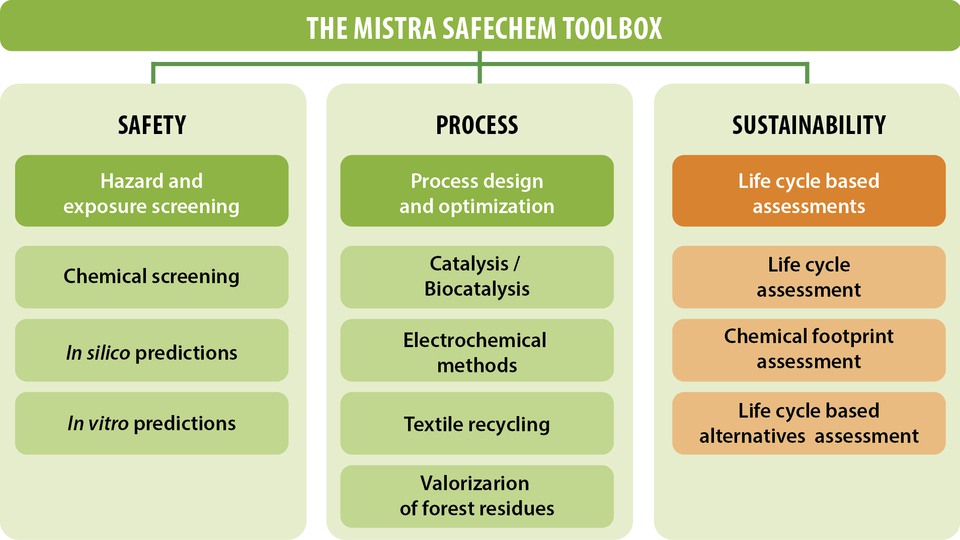
Toolbox: Life cycle based assessments
A life cycle based assessment toolbox is being developed to support the assessment of sustainability of chemicals. It is based on existing models already used in life cycle assessment (LCA) to assess the toxicity and ecotoxicity of chemicals, while taking into account advances in digitalization methods.
Substituting hazardous chemicals in industrial processes and consumer products requires not only the selection of less hazardous alternatives, but also ensuring that the substitution does not lead to unacceptable trade-offs elsewhere in the chemical or product life cycle. Similarly, applying a systems perspective to process design and optimization is essential to avoid shifting the burden from one potential health and environmental impact to another.
Robust methods and tools are needed to address these challenges. Life cycle based tools need to take into account the hazardous properties of chemicals and materials as well as the risks of exposure throughout the life cycle.
The sustainability part of the toolbox is divided into three main parts: Life cycle assessment, Chemical footprint assessment and Life cycle based alternatives assessment. Click the plus signs below to unfold the descriptions and learn more about the tools included in each part.
-
2024-06-28 | newsImpressive achievements of Mistra SafeChem in phase 1
-
2024-06-19 | newsNew report: Crystal Engineering for Water Treatment
-
2024-05-17 | newsSee the full agenda for our final webinar
-
2024-05-15 | newsThe Mistra SafeChem in silico toolbox presented at the SETAC conference
-
2024-04-03 | newsFour more years – Mistra SafeChem gets go-ahead for second phase




